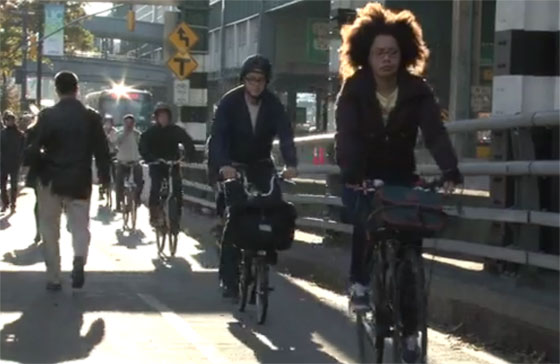People Biking and Walking on the QBoro Bridge Outnumber Cars on Its South Outer Roadway
Volunteers did the counts as they build a case for converting the South Outer Roadway to walking or biking.

The number of people biking across the Queensboro Bridge has increased more than 200 percent in the last decade, according to DOT. Usage has reached the point where the path on the bridge’s North Outer Roadway often feels uncomfortably crowded, with people biking and walking in both directions crammed into the equivalent of a single car lane.
The packed conditions are worst at rush hour. “There’s constant conflicts between the various users, which is not just stressful and unpleasant but scary and pretty dangerous to boot,” said Astoria resident and bike commuter Macartney Morris.
As co-chair of Transportation Alternatives’ Queens volunteer committee, Morris is spearheading the campaign for a second path on the bridge for car-free travel. More than 700 people have signed the TransAlt petition to convert the South Outer Roadway, which currently carries eastbound car traffic to Queens during the day and is closed every night, to a biking and walking path.
Yesterday, Morris and other volunteers stood at the bridge approaches in Queens during the morning and even rush and counted the number of pedestrians, cyclists, and motorists using the North Outer Roadway and South Outer Roadway. The total number of people walking and biking across the bridge outnumbered the number of motor vehicles on the South Outer Roadway:

Notably, the numerical advantage for walking and biking held up during the p.m. peak, when eastbound car traffic is heavier.
These numbers give a sense of how intensively the biking and walking path is already used, but they don’t tell the whole story. The bike network on each side of the bridge is still underdeveloped, but as the city builds it out via projects like the Queens Boulevard bike lanes, the North Outer Roadway will become even more inadequate. The city will need to convert another car lane to relieve the bottleneck.
The idea of turning the South Outer Roadway into a biking and walking lane has gained momentum following repeated nighttime closures of the North Outer Roadway. The closures prompted advocates to call for the South Outer Roadway to be opened to walking and biking. DOT Commissioner Polly Trottenberg has said a permanent conversion of the South Outer Roadway is on the table.
Morris and the Queens TransAlt volunteers will be doing more counts on the bridge to make their case. On Monday they plan to gather data from 7 to 9 a.m. and 5 to 7 p.m.





